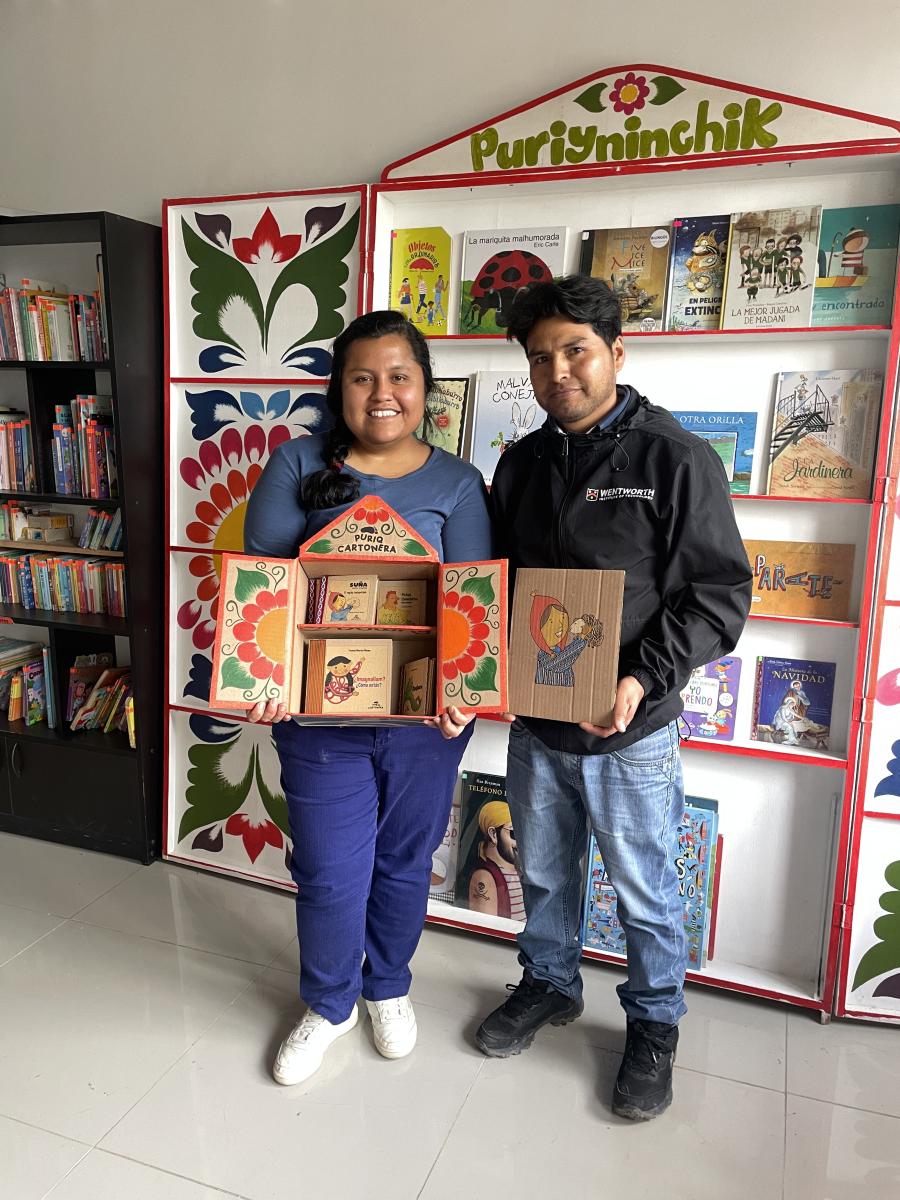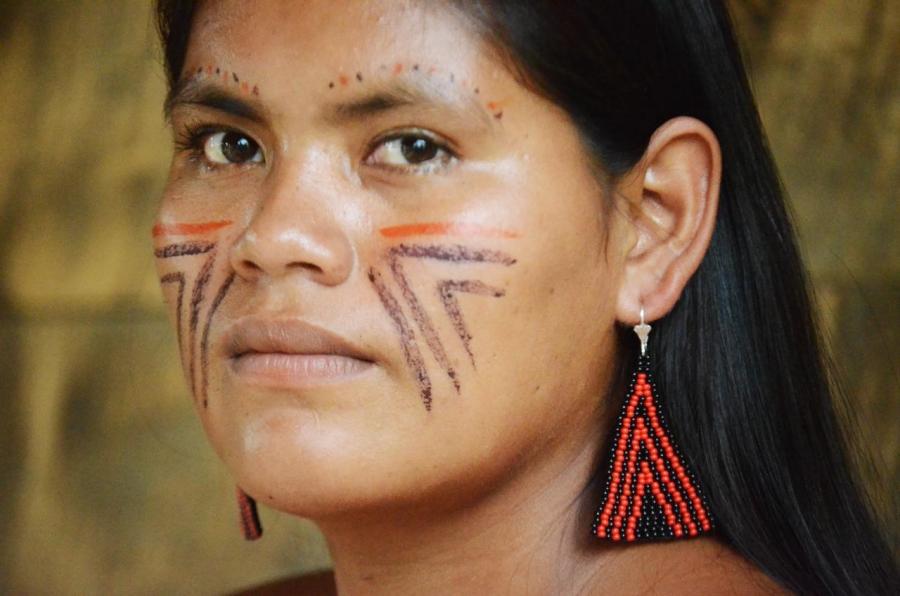Throughout Andean history, two themes pull at cross-purposes. One is adaptation, which combines agricultural innovations with a social organization that emphasizes principles of complementarity and reciprocity - a pattern that binds people, resources and regions. It serves to ameliorate the consequences of climatic unpredictability, ecological diversity and (by European standards) marginal agricultural terrain. The second is four centuries of domination by outsiders seeking to gain control over Andean resources and labor, and subsequently constraining people's efforts to meet their needs. Despite generations of resistance to domination, the adaptive fabric of many Andean groups may be wearing thin. Currently, conditions of economic and political marginality characterize rural highland communities. The intention of this article is to lay out some of the dynamics of this marginalization, foregrounding illness as both a symptom and a cause of the poverty many Andean producers must confront.
The Changing Economic Context
Due substantially to the growth of the international wool trade over the last 150 years, adaptive activities on the altiplano have increasingly been reorganized within the context of a growing cash economy. Our concern is with a reduction in access to land and agropastoral inputs, rising commercialization of local resources and changing consumption norms. As a result, small-scale producers are being squeezed out of agriculture and relegated to the lowest and most vulnerable levels of the economy. Restricted opportunities in subsistence production coupled with escalating monetization have led, for most, to a reliance on supplemental cash earning activities. For many this means taking temporary and very low paying wage-labor jobs, or participating in petty commodity production and small-scale commercial endeavors. Class and ethnic distinctions play a large part in influencing people's options and levels of remuneration. Gender is critical as well since women's labor is especially devalued; maximally, women are paid half as much as men for a day's work.
Participation in wage labor for the farmer or herder implies a loss of flexibility and control. For example, commitments to wage labor may force postponement of planting and harvesting. Furthermore, as men migrate for work, the bulk of subsistence production and family maintenance falls to women, substantially increasing their workload. Prolonged absence of many individuals additionally constrains local production activities.
Predictable access to labor is critical to a somewhat independent agropastoral lifestyle. Andean households have traditionally relied upon extensive networks of social reciprocity which are essential in maintaining flexibility in the development of multiple resources and buffering the effects of adverse events. In the contemporary context of cash exchange, labor frequently becomes a commodity, resulting in a shift in the nature of social relations toward more impersonal and money oriented exchanges. Labor is often left unavailable for fulfillment of social obligations during critical periods in the agricultural cycle. Subsistence production is thus compromised, but remuneration obtained through wage labor is insufficient for an unskilled worker to meet basic needs of food, clothing, fertilizer and seed.
This contradiction has become more pronounced as new and larger markets have entered the region, making available a variety of previously inaccessible goods. This, in part, has stimulated an increase in consumption norms. Locally crafted or gathered items (such as blankets and fuel) are now regularly replaced by imported goods of often inferior quality. Also, as commercial products flow into rural areas, more family income is spent on items once considered luxury goods (i.e., plastic wares, watches, radios, bicycles, beer and soft drinks). Basic subsistence items such as food, clothing and production inputs are increasingly bought as commodities even though the relative price of many of these is high and subject to the triple-digit inflation common to the area.
As precarious climatic conditions combine with highly restricted access to land, seed, fertilizer and labor, the high nutrient tuber and grain crops grown for subsistence do not yield sufficient supplies for year-round consumption. Industrialized food products with lower nutritional content such as wheat products, rice and sugar, which are marketed in rural areas, often under government price controls, are quickly becoming the principal foodstuffs for many Andean families. Poorer families cannot, afford to purchase the higher quality imported foods (e.g., fruits and vegetables), and time constraints often inhibit their acquisition through traditional long-distance barter networks.
Within the context of this expanding commercialization of highland communities, illness not only occurs as a symptom of the changing character and constrained access to basic necessities, but also further affects a household's ability to provision itself. By definition, illness implies a degree of incapacitation and potential disruption of productive activities. Who helps out, under what conditions, for how long and, more importantly, who cannot afford to give assistance, are reflections of a family's overall situation. Illness, therefore, becomes an unfortunate set of binoculars under which the dynamics of sociocultural and political-economic processes are concentrated.
Nuñoa: A Case in Point
For the past three years anthropologists from the University of Massachusetts have studied the responses to and subsequent consequences of illness among small scale agropastoralists in the Nuñoa District (Puno) of the southern Peruvian highlands. The District contains one major town (pop. 4,000) and has long been involved in commercial alpaca wool and meat production. Since implementation of agrarian reform measures in the early 1970s, significant changes have occurred. Haciendas which controlled most of the land were replaced by state controlled cooperatives; a Sunday market was established; educational facilities have been improved, both town and the countryside; and recently, a small health clinic and other public health facilities were added. This "progress package" has greatly increased contact with and dependence on the market and national government. Some individuals have benefited from the changes, especially those living on the cooperatives. However, in respect to several indicators of social and biological well-being, living conditions of the population seem not to have substantially changed from 20 years ago, when they were last studied. Our concern here is with the worsening situation of a growing segment of poor households, for whom illness poses serious limitations to life options.
Reduced access to land (linked to agrarian reform) and expanding commoditization of the local economy are apparent, and in many ways deleterious in effect. In the Department of Puno, approximately 75 percent of productive land is owned by state controlled cooperatives which employ only 25 percent of the rural population. Many towns and urban areas have grown as they have received an influx of rural peoples. The town of Nuñoa has doubled in size over the past 15 years, while population in the surrounding countryside has remained stable. Residents complain about the lack of local employment opportunities. One consequence has been the proliferation of tiny shops offering identical selections of canned foods, soft drinks, thread and candles, as many individuals try to establish a source of cash income by tying their livelihood to the regional and national economy. More and more, goods of local origin are marketed out of the hands of townspeople.
It is important to emphasize here that the Nuñoa area is not impoverished from an environmental standpoint. Truckloads of meat and some of the finest alpaca fiber in Peru leave town on a regular basis. Given this wealth, and the current high prices for fiber, it seems ironic that the poor cannot afford the products which travel by their very doors. Locally produced cheese and eggs are increasingly being sold to out-of-town Sunday market vendors at prices most residents either cannot or will not pay. Commercialization has likewise affected access to rural resources which in the past could be obtained without cost or obligation. Ichu grass - used in preparation and storage of crops and for roofing, and dung - used for fuel and fertilizer, are now being sold locally. Tin roofs, kerosene fuel, and commercial fertilizer and insecticides have become expensive alternatives.
Commercialization has expanded to affect production as well as consumption. Although individuals with strong social and family ties still help each other out reciprocally, in many cases we saw cash payments to brothers, sisters and even parents. Some farmers said they could not find help when they needed it. Many others simply could not afford to pay a wage or even the coca, alcohol and food socially required in any labor exchange. The seasonal work requirements of traditional Andean production systems and the inflexible time constraints placed on subsistence work by wage and commercial activities amplify the need for access to labor. The changing nature of social relations limit this access for a growing segment of poor farmers. Since illness directly affects labor availability within the household, its consequences can be devastating for the small farming family.
Health in Nuñoa
The impact of illness on production among the people of Nuñoa was clearly evident during seasonal surveys of illness. Over half of the families we interviewed had at least one adult family member sick during each of the surveys, and over a two-week period this individual lost about five workdays. Whether adult women or men were ill, the care for the sick individual and continuation of family and household maintenance tasks frequently led to a further reduction in family productive activities.
When illness threatens to disrupt crucial farming tasks, many individuals choose to continue working, deferring the biological and social cost of sickness until completion of the work. For some this results in extended bed rest, and limits their activities in other arenas. If social and family ties are sufficiently strong and illness brief, others help out and the immediate crisis is buffered. However, for individuals who are so strongly linked to the wage market or who are so chronically ill that they cannot be expected to repay the help of others, non-family help can be difficult to obtain.
In such cases, the incapacitated family retrenches and plants less, using whatever family labor is available. The most critical cases occur when production is reduced to the point where a farmer continuously fails to grow enough to replenish seed and still contribute to the household food supply. Due to illness or competing demands of wage work, the failure of community members to fulfill labor obligations through which they maintain access to communal lands is alarmingly common.
Obviously, these processes do not affect equally all people across the Andean landscape. Many elderly who physically can no longer farm, who have exhausted their potential as wage laborers and whose children have moved away, eke out only a meager living even when well. Likewise, women in their multiple roles as producer, reproducer and family caretaker appear particularly vulnerable. They represented 80 percent of the illnesses reported, and problems associated with pre- and post-partum reproductive periods were responsible for half of the disruption. In that almost 20 percent of the households in the town of Nuñoa are headed by single women, programs aimed at improving the biological and economic well-being of this and similar rural populations must specifically address the plight of women.
Clearly, the most vulnerable are the poor, especially those with no access to land or other requirements of subsistence production. This segment of the population in our research area is steadily increasing, and the impact of illness on small-scale farmers is accelerating the trend. The maintenance of health is critical not only as a basic human right but because of the crucial link which poor health holds in the reproduction of poverty.
The message of our observations is not intended as a eulogy to the strength of Andean peoples and social organization, nor to imply that new adaptive strategies are not forthcoming to deal with changing conditions. We wish to emphasize that the impact of illness cannot be understood merely in its symptomological aspects. Many forms of perceived "progress" carry a hidden cost, particularly when they are based on an organizational framework alien and contradictory to local organizations and strategies. Understanding local forms which have developed over centuries of adjustment to changing environmental conditions, political and economic exploitation, and patterns of illness must be the first step in any development program.
Article copyright Cultural Survival, Inc.



